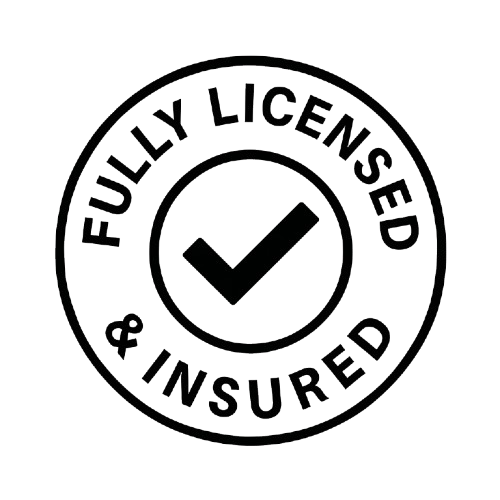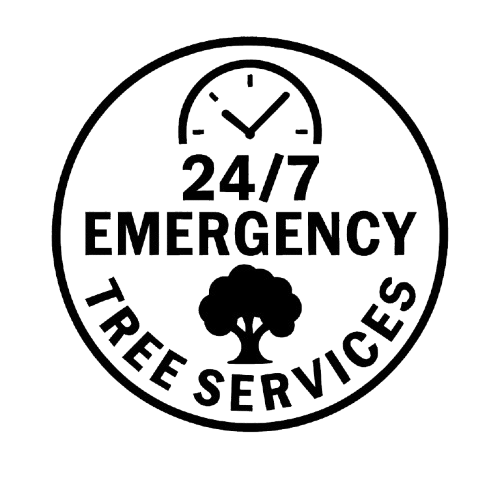Pruning street trees in New York City is vital to urban forestry management, enhancing public safety and the trees’ health. Proper pruning helps prevent hazards like falling branches while promoting tree longevity and aesthetic appeal. The NYC Department of Parks and Recreation regulates the pruning of city-owned trees, ensuring that specific guidelines and best practices are followed to maintain the urban canopy. Understanding when and how to prune and follow these protocols is essential for keeping the city’s green spaces safe and thriving.
Key Takeaways:
- Permits and Regulations Are Essential: Pruning NYC street trees requires a Department of Parks and Recreation permit. Unauthorized pruning can result in fines and potentially damage the tree’s health. Homeowners are encouraged to hire certified professionals for the task.
- Pruning Benefits Tree Health and Public Safety: Regular pruning, conducted according to NYC guidelines, improves tree longevity and ensures public safety by reducing the risk of falling branches and maintaining clear sightlines for pedestrians and drivers.
- Proper Techniques Promote Healthy Growth: Correct pruning techniques, such as crown thinning and crown raising, help trees grow more robust and resilient while avoiding damaging practices like tree topping. This ensures that the tree remains a vital part of the urban landscape.
NYC Street Tree Pruning Guidelines
Strict guidelines govern the proper pruning of street trees in New York City to ensure tree health and public safety. The NYC Department of Parks and Recreation is in charge of tree care throughout the city, and following their guidelines is essential to keeping the urban canopy in good condition. Below are critical aspects of these guidelines.
When to Prune
Optimal Seasons for Pruning
- The best time to prune trees is late winter or early spring. During these months, trees are dormant, making them less vulnerable to disease and pest infestation.
- Pruning in this period enables the tree to recover before the onset of its high-growth phase in late spring and early summer.
Avoiding Pruning During High-Growth Periods
- It’s recommended to avoid pruning during the high-growth periods in spring and early summer when trees are focused on producing new leaves and expanding their root systems.
- Pruning during these times can stress the tree, making it more susceptible to disease and reducing its overall health.
Who is Responsible
- NYC Department of Parks and Recreation: The Department is responsible for maintaining and caring for all city-owned street trees. They manage the approval process for any pruning work to ensure it follows the city’s guidelines.
- Homeowners’ Responsibilities: Homeowners are responsible for caring for trees on their property, not city-owned trees on the public sidewalk. However, if a street tree presents a hazard, homeowners are encouraged to report it to the Department for prompt action.
- Hiring Certified Arborists: It is advisable to hire a certified arborist for complex pruning tasks or where the tree’s health is at stake. Arborists trained in urban tree care understand the unique needs of street trees and will ensure pruning is conducted safely and correctly.
Pruning Frequency
|
Type of Pruning |
Recommended Frequency |
|
Routine Pruning |
Every 5-7 years |
|
Emergency Pruning |
As needed (e.g., after storms or damage) |
|
Crown Maintenance |
As required based on tree growth patterns |
- Routine Pruning: It’s recommended that street trees be pruned every 5-7 years to remove dead branches, improve structure, and maintain clearance for pedestrians and vehicles.
- Emergency Pruning: Emergency pruning is required when trees are damaged during storms, have broken limbs, or pose an immediate hazard to the public.
Permits and Approvals
Permitting Process
- A permit is required for pruning any city-owned street tree. The application process involves submitting detailed plans for the work to the Department of Parks and Recreation for approval.
- Arborists must be licensed by the city to carry out pruning tasks, ensuring that all tree care practices follow local regulations.
Consequences of Illegal Pruning
- Unauthorized pruning can result in hefty fines and, more importantly, harm the tree’s health. Improperly pruned trees may require costly restoration work or, in severe cases, removal.
Pruning Techniques
|
Technique |
Purpose |
|
Crown Thinning |
Reduces the density of branches to improve air circulation |
|
Crown Raising |
Lower branches are cut off to make room for cars and people. |
|
Crown Reduction |
Keeps the tree healthy while decreasing its overall size |
|
Avoiding Topping |
Topping is harmful and should be avoided, as it can damage the tree’s structure and health. |
- Crown Thinning: This method lowers the density of the tree’s canopy by carefully cutting off branches. It improves airflow, reduces the risk of wind damage, and promotes healthier growth.
- Crown Raising: Lower branches are removed to raise the tree’s crown, creating clearance for pedestrians, vehicles, and signage. This is particularly important for street trees in high-traffic areas.
- Crown Reduction: Crown reduction involves shortening the height and spread of the tree’s canopy while maintaining its natural shape. This is useful for controlling tree size in confined urban spaces.
- Avoiding Tree Topping: Tree topping, or cutting off the top of the tree, is highly damaging. It can lead to decay and weak regrowth, significantly reducing the tree’s lifespan. Instead, proper crown reduction should be used for size management.
Best Practices for Street Tree Pruning
Proper tree pruning enhances beauty and health, promotes safety, and ensures compliance with local regulations. Following best practices when pruning street trees in NYC is essential for preventing damage, promoting tree longevity, and safeguarding public spaces.
Tool Selection
Using Proper Tools
- The right tools are critical for effective and safe pruning. Common tools include:
- Pruning shears for small branches (typically less than 1 inch in diameter).
- Pole pruners for higher branches that are out of reach from the ground.
- Pruning saws for thicker branches that are more difficult to cut with shears.
- High-quality tools ensure clean cuts, reducing the chance of tearing the bark and leaving the tree vulnerable to infection.
Sanitation of Tools
- Cleaning pruning instruments before and after use is crucial to stopping the spread of disease among trees. This is especially important in an urban setting, where diseases can spread quickly.
- Tools can be disinfected using a solution of 70% alcohol or bleach diluted in water.
- Regular sharpening of tools is also crucial to making clean cuts that promote quick healing.
Safety Measures
Ensuring Safe Working Distances
- When pruning street trees, it is essential to maintain safe working distances from pedestrians, vehicles, and overhead utility lines. This ensures the safety of both the pruner and the public.
- Keep the area around the tree clear of people and vehicles to avoid accidents.
- Trees near power lines require special care. In such cases, it is highly recommended that you contact utility companies or certified professionals.
Wearing Protective Gear
- Pruning can be dangerous, mainly if you’re working with sharp objects or at a height. Appropriate safety equipment ought to comprise:
- Hard hats to protect against falling debris.
- Safety glasses to shield eyes from flying wood chips.
- Gloves to prevent cuts and blisters.
- Harnesses when using ladders or elevated platforms to prevent falls.
|
Safety Equipment |
Purpose |
|
Hard Hat |
Protects head from falling branches |
|
Safety Glasses |
Shields eyes from debris |
|
Gloves |
It prevents cuts and improves grip. |
|
Harnesses |
Prevents falls when working at heights |
Ladder Safety Protocols
- When using ladders to access high branches, it’s essential to:
- Position the ladder on a flat, stable surface.
- Use ladders made for pruning that have proper height and weight capacity.
- Avoid overreaching from the ladder to prevent tipping.
Recognizing Tree Health
Identifying Signs of Disease or Decay
- Before starting any pruning task, inspecting the tree for signs of disease or decay is crucial. Look for:
- Discolored bark or leaves, which can indicate fungal infections.
- Soft or spongy wood could signal decay inside the tree.
- Dead branches that show no signs of leaves or new growth.
- Recognizing these signs allows targeted pruning to remove unhealthy parts of the tree while protecting its overall health.
Avoiding Over-Pruning
- Overpriced trees may become weaker and more vulnerable to stress. Best practices dictate that no more than 25% of the tree’s canopy should be removed in a single pruning session.
- Eliminating too many branches at once may interfere with a tree’s vital photosynthetic process, which is necessary for existence.
Cutting Techniques
Making Clean Cuts at the Branch Collar
- The “branch collar” refers to the expanded area where the branch joins the trunk. It has defense cells that aid in the tree’s recovery from pruning. Just outside the branch collar, make cuts to:
- Ensure quick healing.
- Reduce the possibility that the wound will allow illness to penetrate the tree.
Removing Dead, Damaged, or Crossing Branches
- Focus on removing:
- Dead branches that no longer contribute to the tree’s health.
- Damaged branches may break and cause hazards during storms.
- Crossing branches that rub against each other causes wounds and weak points in the tree’s structure.
Working with Professional Arborists
Importance of Hiring ISA-Certified Arborists
- While property owners can sometimes perform basic pruning tasks, professionals should handle more complex jobs, such as dealing with large trees or trees near utility lines.
- ISA-certified arborists have specialized training in the science of tree care, ensuring that pruning is done safely and by best practices.
- These professionals understand NYC-specific regulations and can ensure that any work done complies with local laws.
Ensuring Proper Pruning According to NYC Standards
- NYC has strict standards for the care of street trees, and improper pruning can lead to fines or damage to public property. Certified arborists are knowledgeable about these standards and will:
- Use the correct pruning methods to ensure the tree remains healthy.
- Avoid harmful practices such as tree topping or removing too much canopy.
- Ensure the tree is shaped correctly to benefit both its health and the aesthetics of the city.
Environmental and Aesthetic Benefits of Pruning
Street tree pruning in NYC offers numerous benefits, not only for the health and safety of the trees but also for the urban environment and its inhabitants. Proper pruning ensures trees thrive while contributing to city streets’ aesthetic and ecological value.
Tree Longevity
Healthier, Longer-Living Trees
- Pruning promotes tree health by removing dead, diseased, or damaged branches. This lessens the possibility of illnesses spreading throughout the tree and enables the tree to concentrate its energy on healthy growth.
- Regular pruning helps prevent structural issues that could lead to limb failure or other damage as the tree grows. Well-maintained trees, through pruning, can live longer and continue to benefit the community.
Public Safety
Preventing Accidents from Falling Branches
- One of the most critical benefits of pruning is removing dead or weak branches that could pose a safety hazard. Falling branches can cause property damage or harm pedestrians and vehicles, particularly in busy urban areas.
- Pruning helps to ensure that only substantial, healthy branches remain, significantly reducing the risk of accidents.
Maintaining Clear Sightlines for Traffic and Pedestrians
- Overgrown trees can block drivers’ view at crossings, making it harder for them to notice other cars or pedestrians. Regular pruning maintains clear sightlines, contributing to safer streets for everyone.
- Additionally, pruning helps to keep sidewalks and pathways free from low-hanging branches, providing safe passage for pedestrians.
Aesthetic Appeal
Shaping Trees for a Balanced and Attractive Streetscape
- Trees can be shaped to improve the aesthetic attractiveness of city roadways when properly pruned. An adequately pruned tree has a balanced structure that blends well with the surrounding urban setting.
- Aesthetic pruning techniques, such as crown thinning and crown raising, create a pleasing symmetry and prevent trees from looking overgrown or misshapen.
Energy Efficiency
Well-Pruned Trees Provide Shade and Reduce Cooling Costs
- Pruning trees to maintain a healthy canopy can provide optimal shade during the hot summer. This natural shading effect helps reduce energy costs by cooling nearby buildings and streets, reducing the need for air conditioning.
- In densely built urban areas like NYC, shade from trees is crucial for keeping the environment calm and reducing the heat island effect.
Enhanced Biodiversity
Healthy Trees Attract Wildlife and Contribute to Urban Ecosystems
- Pruned trees, free from disease and decay, are more likely to attract diverse wildlife, including birds, insects, and small mammals. This contributes to a vibrant and healthy urban ecosystem.
- A diverse and healthy population of street trees enhances the city’s biodiversity, providing habitats and food sources for various species.
Consequences of Improper Pruning
Improper pruning can have severe consequences for the tree and the surrounding environment. In NYC, strict regulations prevent unqualified or unauthorized individuals from harming street trees.
Damage to Tree Structure and Health
- Incorrect pruning techniques, such as tree topping or removing too much canopy, can damage the tree’s natural structure. This weakens the tree and makes it more vulnerable to limb failure, disease, or decay.
- Over-pruning can disrupt the tree’s ability to produce energy through photosynthesis, leading to reduced growth and an overall decline in health.
Increased Vulnerability to Pests and Diseases
- Improper cuts or the failure to sanitize pruning tools can leave open wounds on the tree susceptible to infection. This makes the tree more vulnerable to pests, fungi, and diseases, which can spread quickly through urban areas.
- Trees that are pruned incorrectly often develop weak or improperly placed regrowth, which can lead to ongoing structural issues and increased susceptibility to pests.
Legal Repercussions for Unauthorized Pruning in NYC
- Pruning street trees without proper authorization from the NYC Department of Parks and Recreation is illegal and can result in hefty fines. The city takes tree care seriously, and unauthorized pruning can lead to legal consequences for property owners or contractors.
- In some cases, trees severely damaged due to improper pruning may need to be removed, resulting in further penalties and costs associated with replanting and maintenance.
FAQs
Does pruning a street tree in NYC require a permit?
You must obtain a permit from the NYC Department of Parks and Recreation. Unauthorized pruning can result in fines.
When is the best time to prune a street tree?
Late winter or early spring is optimal, allowing the tree to heal before the growing season begins.
What happens if I improperly prune a tree?
In addition to harming the tree and increasing its disease susceptibility, improper pruning may result in legal repercussions if done without permission.
How often should NYC street trees be pruned?
Trees should be pruned every 5-7 years or sooner if damage or potential hazards occur.
Can I prune the tree in front of my house?
You can prune city-owned trees only if you obtain a permit and follow guidelines; otherwise, you should hire a certified arborist.
Conclusion
Pruning NYC street trees is a critical practice that ensures the health of the urban canopy and the safety of city residents. Trees can thrive by adhering to proper guidelines and using appropriate techniques, providing environmental, aesthetic, and public safety benefits. Regular pruning helps maintain tree longevity, enhances biodiversity, and reduces cooling costs through natural shading. Conversely, improper or unauthorized pruning can cause significant harm to trees and lead to legal repercussions. Following best practices and working with certified professionals ensures that street trees continue contributing to a vibrant and sustainable urban environment.




